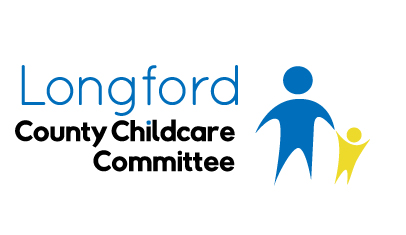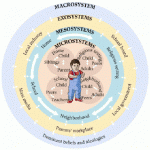Why are partnerships with parents so important?
As Early Years practitioners we are all aware that parents are the children’s primary educators, as well as primary caregivers. Parents know their children better than anyone, and as secondary caregivers, we need to be there to access that information they can provide and this is done through good communication and so much more. As Urie Bronfenbrenner describes in his ecological systems theory, he described it quite like a set of Russian dolls, with the child at the centre, and their home, surrounded by their family, school and other areas in their life, that provide support, it is this connection within these systems that can shape a child’s development and learning, in other words the more support, the parents get, i.e. our partnership with parents, the better for the child’s development, below is an image of this system. (Shaffer, p87)
Source: Pinterest
Partnership with Parents: Role of Practitioners
For many of us as practitioners, sometimes we need to step back and assess/analyse our relationships/partnerships with parents. We may have to do this by stepping in their shoes. One of the pillars in the Aistear Síolta practice guide is Building Partnership with Parents, here you can access an evaluation toolkit, which allows you to evaluate and then reflect on your partnership with parents.
For many new parents, their knowledge of Early Years Education may be quite limited. They may have started their education at primary school, so never been to Preschool. Knowledge is key and it makes transition and settling in easier. Here we as early years experts need to provide that information, and our partnership with parents starts.
Some helpful tips
- Be a friendly ear, explain you are only a phone call away, or if they’d prefer, email.
- Have a parent’s handbook. This could include, services provided, fees, your curriculum, and names of your policies and where they can access this further, information about holidays, sickness, staff qualifications, and classroom ratios.
- For many parents, they may not have the time to come to the service, and settling in period might not be an option,
- Provide visual portfolios (images from your service) so parents can use to help children settle in.
- Have you time to go to them, even just to drop off relevant paperwork and parent’s handbook.
- Show parents around the service, and introduce them to staff, so they feel they know the place
- Pick a time that suits them, and answer any questions they may have.
- Have a Parent open day, preferably a day the service is not open. This will allow staff to talk to the parents.
Source: www.pexels.com
Partnerships with Parents is a Journey
We cannot forget existing parents and families, partnerships with parents is ongoing and we need to build on and strengthen. Information shouldn’t stop at the parent’s handbook upon registration. Parents like to know what is going in their child’s life and education, and like to be consulted and feel informed.
As Early Years practitioners, we can use
- Informal meet and greet, most likely at the start of day/end of day. Here it’s useful to have a parents message notebook in each classroom, to record messages from parents, to make sure they are given to the child’s/children’s key person. Formal meet and greets, scheduling parent/teacher meetings to discuss items in detail.
- Notice boards to display pictures of the children at play. Notice boards should be in prominent places, where parents are likely to see them.
- Photographs can be emailed of their children at play that week. This can be a lot of work, but is rewarding. Make sure to have an appropriate policy in place.
- Newsletters are a great way of letting parents know general information of the service and helps them get a good feeling of what’s going on.
- Aistear learning stories, these are a great way of showing the child in play, deep in concentration and learning. It will give a better understanding to parents, why we do what we do.
- Any changes in the service, e.g. new staff, new policies, keep Parents up to date. You can use group text or simply post the notice, at the front door.
Partners in Sharing Information
Through sharing of information, children and their families feel valued. They feel their families, their culture is represented and they feel welcome. This works both ways. Encouraging Parents to share information and be involved in your service is an important part of this. Parents can contribute within the setting in so many ways.
Parents can:
- Pass on information at the start of the day, here the notebook can be used to record message if necessary.
- Update the child’s key person on their achievements, e.g. how well they’re doing with toilet training.
- Concerns can be talked over, does the child need additional support. Here a parent can seek advice off the practitioner, this works both ways, good communication, and makes such concerns easier to talk about.
- Look at the child’s artwork and/or photographs displayed and at the Aistear Learning Stories. Ask them about these and show an interest.
- Find out if parents are good at cooking, gardening, music. Could they contribute to an activity in the Early Year’s Service?
- When children go on excursions, could parents join these?
- Could Parents come in to talk about their job?
- Share their culture with the service. When the service is looking for information about families, get them to share and cooperate with them, children love to see their family represented, and in particular for children, photographs are a great way of doing this.
- Is there an anonymous suggestions box, if so, remind Parent’s to use it.
Ref: Shaffer, D. (2009) Social and Personality Development, Wadsworth Cengage Learning.



